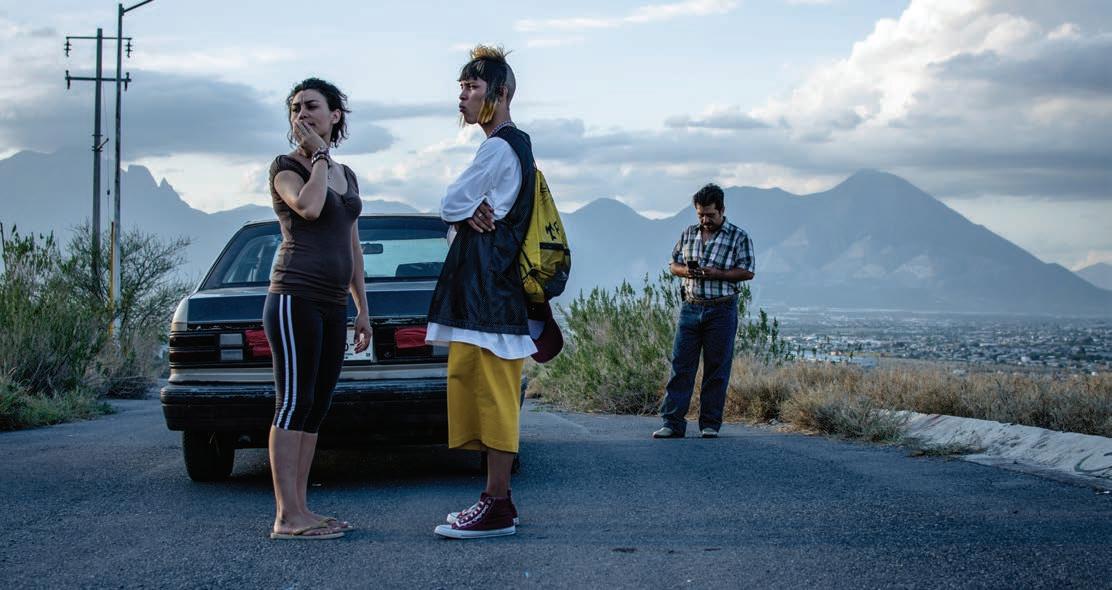
3 minute read
MEET THE MAKER
culture+
Spotlighting the people and projects you need to know
@BACKSTAGE FACEBOOK.COM/BACKSTAGE @BACKSTAGECAST
Meet the Maker
Fernando Frías de la Parra, “I’m No Longer Here” writer + director
By Jose Solís
ULISES, THE PROTAGONIST
of Fernando Frías de la Parra’s “I’m No Longer Here,” might as well be an invisible man. He’s forced to flee his hometown of Monterrey, Mexico, and cross the border to seek survival in New York City. But even there, he’s invisible, an undocumented immigrant who doesn’t speak English and is forced to squat on private property.
The young man’s only escape is through music and dancing. In Monterrey, he was part of Los Terkos, a gang obsessed with cumbia music as a way of finding meaning in a society filled with poverty, corruption, and alienation. Frías captures lives on the periphery without deferring to sentimentality. “It’s common to exoticize and romanticize, to only see the violent aspects of people in gangs,” he comments. Yesica Silva and Daniel Garcia in “I’m No Longer Here”
What interests him is adding context and meaning, so the people who watch his films won’t be quick to judge the decisions made by his characters. “Systematic oppression has led to sacrificing the well-being of people,” he says. Instead, he believes it’s important to show how social issues are a “consequence of the interventionism that has affected our countries, leading generations to [become] lost.”
Frías directed every episode of the first season of HBO’s “Los Espookys,” a series that tonally couldn’t be further from “I’m No Longer Here” (now streaming on Netflix). But at their cores, both share the director’s generosity when it comes to the details that make up someone’s identity.
In “Los Espookys,” it’s the horror genre, and in “I’m No Longer Here,” it’s cumbia; both have been perceived as less than by the establishments of their respective mediums.
Rather than calling it a subculture, Frías refers to the Mexican cumbia movement as “counterculture.” According to him, “It’s meant to create meaning as a response to how people are living.” Classism in Mexico and Latin America has led to an erasure of local culture. “The aspirational model of upper-class people in Mexico leads them to tend to look down at what is Mexican,” explains Frías. Tropical music like cumbia is seen as entertainment for poor people.
When the film was released in Mexico, some in the upper class criticized its depiction of Monterrey. “ ‘It’s not our Monterrey,’ they said. That shows an inability to really see yourself, to see who you really are,” says the filmmaker. “That’s the inheritance of colonialism: thinking what others have is much better. It’s a disease of collective self-esteem.”
Although nearly all of the cast had never acted before, each member of the ensemble, led by Daniel Garcia, delivers a sensitive performance. “You need to see your characters with love, affection, and respect,” Frías says.
The filmmaker came to New York City from Mexico City with a scholarship to study film at Columbia University. Although his overall conditions were vastly different from Ulises’, like his main character, he found himself feeling different. “We come here to find something better, and when you arrive, you might feel that’s not the case,” he admits.
In school, he was surrounded by people accustomed to a different way of storytelling: mechanical, guided by structure rather than by emotion. “I need to connect to passion more than to the coldness of calculated design,” he explains. Though he doesn’t judge those who find comfort in other modes of storytelling, “I become my characters and let them live within me; that’s how I like to write and make my films,” he adds.
Throughout the film, Ulises and his friends try to keep in touch despite geographical and technological barriers. It’s like they’re all putting messages in bottles, waiting to be found. The film’s warm critical reception suggests Frías’ message is arriving on receptive shores. “People all over the world have opened the bottle, read the message, and sent it back hoping others will find it, too,” he says. “Perhaps they will each be sending their own bottles.”






